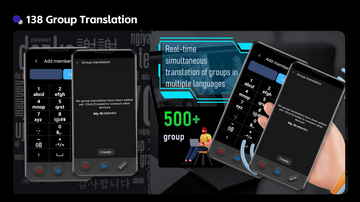Are you a Mac newbie? Are you proficient in using Mac computers? We have prepared a complete list of shortcut keys for Mac computers, especially for novice users! ! ! Learn it quickly and use these cool skills.

Power button: Press to turn on your Mac or wake your Mac from sleep. Press and hold this button for 1.5 seconds to put your Mac to sleep. Continuing to hold will force the Mac to shut down. Shortcut keys for power on/off, sleep, and logout
Option–Command–Power Button* or Option–Command–Media Eject (Option–Command–Media Eject): Put your Mac to sleep.
Control–Shift–Power Button* or Control–Shift–Media Eject (Control–Shift–Media Eject): Put the display to sleep.
Control–Power Button* or Control–Media Eject Key: Displays a dialog asking if you want to reboot, sleep, or shut down.
Control–Command–Power Button*: Forces the Mac to restart without being prompted to save any open and unsaved documents.
Control–Command–Media Eject: Quit all applications, then restart your Mac. If any open documents have unsaved changes, you'll be asked if you want to save those changes.
Control–Option–Command–Power Button* or Control–Option–Command–Media Eject Key: Quit all apps, then shut down your Mac. If any open documents have unsaved changes, you'll be asked if you want to save those changes.
Control-Command-Q: Instantly lock the screen.
Shift–Command–Q: Log out of your macOS user account . You will be prompted for confirmation. To log out immediately without confirmation, press Option-Shift-Command-Q.
Document Shortcuts
Command-B: Bold selected text, or turn bolding on or off.
Command-I: Italicize selected text, or turn italics on or off.
Command-K: Add a web page link .
Command-U: Underline the selected text, or turn underlining on or off.
Command-T: Show or hide the Fonts window.
Command-D: Select the Desktop folder from within the Open dialog or the Save dialog.
Control-Command-D: Show or hide the definition of the selected word.
Shift-Command–colon (:): Show the Spelling and Grammar window.
Command–Semicolon (;): Find misspelled words in the document.
Option-Delete: Delete the word to the left of the insertion point.
Control-H: Delete the character to the left of the insertion point. You can also use the Delete key.
Control-D: Delete the character to the right of the insertion point. You can also use Fn-Delete.
Fn-Delete: Delete forward on keyboards without a forward delete key. You can also use Control-D.
Control-K: Delete text between the insertion point and the end of the line or paragraph.
Fn-Up Arrow: Page Up: Scroll up one page.
Fn–Down Arrow: Page Down: Scroll down one page.
Fn–Left Arrow: Home: Scroll to the beginning of the document.
Fn–Right Arrow: End: Scroll to the end of the document.
Command–Up Arrow: Move the insertion point to the beginning of the document.
Command–Down Arrow: Move the insertion point to the end of the document.
Command–Left Arrow: Move the insertion point to the beginning of the current line.
Command–Right Arrow: Move the insertion point to the end of the current line.
Option–Left Arrow: Move the insertion point to the beginning of the previous word.
Option–Right Arrow: Move the insertion point to the end of the next word.
Shift-Command–Up Arrow: Select the text between the insertion point and the beginning of the document.
Shift-Command–Down Arrow: Select the text between the insertion point and the end of the document.
Shift-Command–Left Arrow: Select the text between the insertion point and the beginning of the current line.
Shift-Command–Right Arrow: Select the text between the insertion point and the end of the current line.
Shift–Up Arrow: Extend the text selection to the nearest character at the same horizontal position on the previous line.
Shift–Down Arrow: Extend the text selection to the nearest character at the same horizontal position on the next line.
Shift–Left Arrow: Extend the text selection one character to the left.
Shift–Right Arrow: Extend the text selection one character to the right.
Option–Shift–Up Arrow: Extend the text selection to the beginning of the current paragraph , and press it again to extend to the beginning of the next paragraph.
Option–Shift–Down Arrow: Extend the text selection to the end of the current paragraph, and press it again to extend to the end of the next paragraph.
Option–Shift–Left Arrow: Extend text selection to the beginning of the current word, and press again to the beginning of the next word.
Option–Shift–Left Arrow: Extend text selection to the end of the current word, and again to the end of the next word.
Control–A: Move to the beginning of the line or paragraph.
Control–E: Move to the end of the line or paragraph.
Control–F: Move forward one character.
Control–B: Move backward one character.
Control–P: Move up one line.
Control–N: Move down one line.
Control-O: Insert a new line after the insertion point.
Control–T: Swap the character after the insertion point with the character before the insertion point.
Command–Left curly brace ({): Align left.
Command–Closing curly brace (}): Right align.
Shift-Command–vertical bar (|): Center alignment.
Option-Command-F: Go to the search field.
Option-Command-T: Show or hide the toolbar in the app.
Option-Command-C: Copy Style: Copies the formatting of the selected item to the clipboard.
Option-Command-V: Paste Style: Applies the copied style to the selection.
Option-Shift-Command-V: Paste and Match Styles: Applies the styles of surrounding content to items pasted within that content.
Option-Command-I: Show or hide the inspector window.
Shift-Command-P: Page Setup: Display a window for choosing document settings.
Shift-Command-S: Display the Save As dialog or copy the current document.
Shift-Command-Minus Sign (-): Zoom out from the selected item.
Shift-Command-Plus (+): Zoom in on the selected item. Command–equal sign (=) does the same thing.
Shift-Command–question mark (?): Open the Help menu.
Cut, copy, paste and other common shortcuts
Command-X: Cut the selected item and copy it to the clipboard.
Command-C: Copy the selected item to the clipboard. The same applies to files in the Finder.
Command-V: Paste the contents of the clipboard into the current document or application. The same applies to files in the Finder.
Command-Z: Undo the last command. You can then press Shift-Command-Z to redo, reversing the undo command . In some applications, you can undo and redo multiple commands.
Command-A: Select all items.
Command-F: Find an item in a document or open a Find window.
Command-G: Find Again: Find the next occurrence of the previously found item. To find the previous occurrence, press Shift-Command-G.
Command-M: Minimize the frontmost window to the Dock. To minimize all windows of the frontmost app, press Option-Command-M.
Command-O: Open the selected item, or open a dialog box to choose a file to open.
Command-P: Print the current document.
Command-S: Save the current document.
Command-T: Open a new tab.
Command-W: Close the frontmost window. To close all windows of an app, press Option-Command-W.
Option-Command-Esc: Force quit the app.
Command-Spacebar: Show or hide the Spotlight search bar.
Control-Command–Spacebar: Display the Character Inspector, from which you can select emoji and other symbols.
Control-Command-F: Use the app in full screen (if the app supports it).
Spacebar: Use Quick Look to preview selected items.
Command-Tab: Switch between multiple open apps to the next most recently used app.
Shift-Command-5 : In macOS Mojave or later, take a screenshot or record the screen. You can also use Shift-Command-3 or Shift-Command-4 to take a screenshot.
Shift-Command-N: Create a new folder in the Finder.
Command-Comma (,): Open the preferences for the front app.
Finder and system shortcuts
Command-D: Duplicate selected files.
Command-E: Eject the selected disk or volume.
Command-F: Start a Spotlight search in a Finder window.
Command-I: Display the Get Info window for the selected file.
Command-R: (1) If an alias is selected in the Finder: Show the original file for the selected alias. (2) In some applications such as Calendar or Safari, refresh or reload the page. (3) In the "Software Update" preferences, check again for software updates.
Shift-Command-C: Open the Computer window.
Shift-Command-D: Open the Desktop folder.
Shift-Command-F: Open the Recent window, which shows all the files you have recently viewed or changed.
Shift-Command-G: Open the Go to Folder window.
Shift-Command-H: Open the home folder of the current macOS user account.
Shift-Command-I: Open iCloud Drive.
Shift-Command-K: Open the Network window.
Option-Command-L: Open the Downloads folder.
Shift-Command-N: Create a new folder.
Shift-Command-O: Open the Documents folder.
Shift-Command-P: Show or hide the preview pane in a Finder window .
Shift-Command-R: Open the AirDrop window.
Shift-Command-T: Show or hide the tab bar in Finder windows .
Ctrl-Shift-Command-T: Add selected Finder items to the Dock (OS X Mavericks or later)
Shift-Command-U: Open the Utilities folder.
Option-Command-D: Show or hide the Dock.
Control-Command-T: Add selected item to sidebar (OS X Mavericks or later).
Option-Command-P: Hide or show the Path bar in Finder windows.
Option-Command-S: Hide or show the sidebar in Finder windows.
Command–Slash (/): Hide or show the status bar in Finder windows.
Command-J: Show the Display options.
Command-K: Open the Connect to Server window.
Control-Command-A: Make an alias for the selected item.
Command-N: Open a new Finder window.
Option-Command-N: New Smart Folder.
Command-T: Show or hide the tab bar when a single tab is open in the current Finder window.
Option-Command-T: Show or hide the toolbar when a single tab is open in the current Finder window.
Option-Command-V: Move the file in the clipboard from its original location to its current location.
Command-Y: Preview the selected file with Quick Look.
Option-Command-Y: Display a Quick View slideshow of the selected file.
Command-1: Display items in Finder windows as icons.
Command-2: Display items in a Finder window as a list.
Command-3: Display items in Finder windows in columns.
Command-4: Show items in a Finder window as a gallery.
Command–Left square bracket ([): Go to the previous folder.
Command–right bracket (]): Go to the next folder.
Command–Up Arrow: Open the folder that contains the current folder.
Command–Control–Up Arrow: Open the folder containing the current folder in a new window.
Command–Down Arrow: Open the selected item.
Right Arrow: Open the selected folder. This shortcut is only available in list view.
Left Arrow: Close the selected folder. This shortcut is only available in list view.
Command-Delete: Move the selected item to the Trash.
Shift-Command-Delete: Empty the Trash.
Option-Shift-Command-Delete: Empty the Trash without showing a confirmation dialog.
Command-Brightness Down: Turn video mirroring on or off when your Mac is connected to multiple monitors.
Option–Brightness Up: Open Displays preferences. This shortcut key works with any brightness key.
Control–Brightness Up or Control–Brightness Down: Change the brightness of the external display (if the display supports it).
Option-Shift–Brightness Up or Option-Shift–Brightness Down: Adjusts display brightness in smaller steps. If your monitor supports it, you can add the Control key to this shortcut to make adjustments on the external monitor.
Option–Mission Control: Open Mission Control preferences.
Command-Mission Control: Show the desktop.
Control–Down Arrow: Show all windows of the frontmost app.
Option–Turn up the volume: Open the Sound preferences. This shortcut works with either volume key.
Option-Shift–Volume Up or Option-Shift–Volume Down: Adjust volume in smaller steps.
Option–Keyboard Brightness Up: Opens the Keyboard preferences. This shortcut works with any keyboard brightness key.
Option-Shift–Keyboard Brightness Up or Option-Shift–Keyboard Brightness Down: Adjust keyboard brightness in smaller steps.
Double-click the Option key: Open the item in a separate window, then close the original window.
Double-click the Command key: Open the folder in a separate tab or window.
Command-drag to another volume: Moves the dragged item to another volume instead of copying it.
Option-drag: Copy the dragged item. The pointer changes as you drag the item.
Option-Command while dragging: Make a stand-in for the dragged item. The pointer changes as you drag the item.
Option-click the opening triangle: Open all folders within the selected folder. This shortcut works only in list view.
Command - click window title: View folders that contain the current folder.





